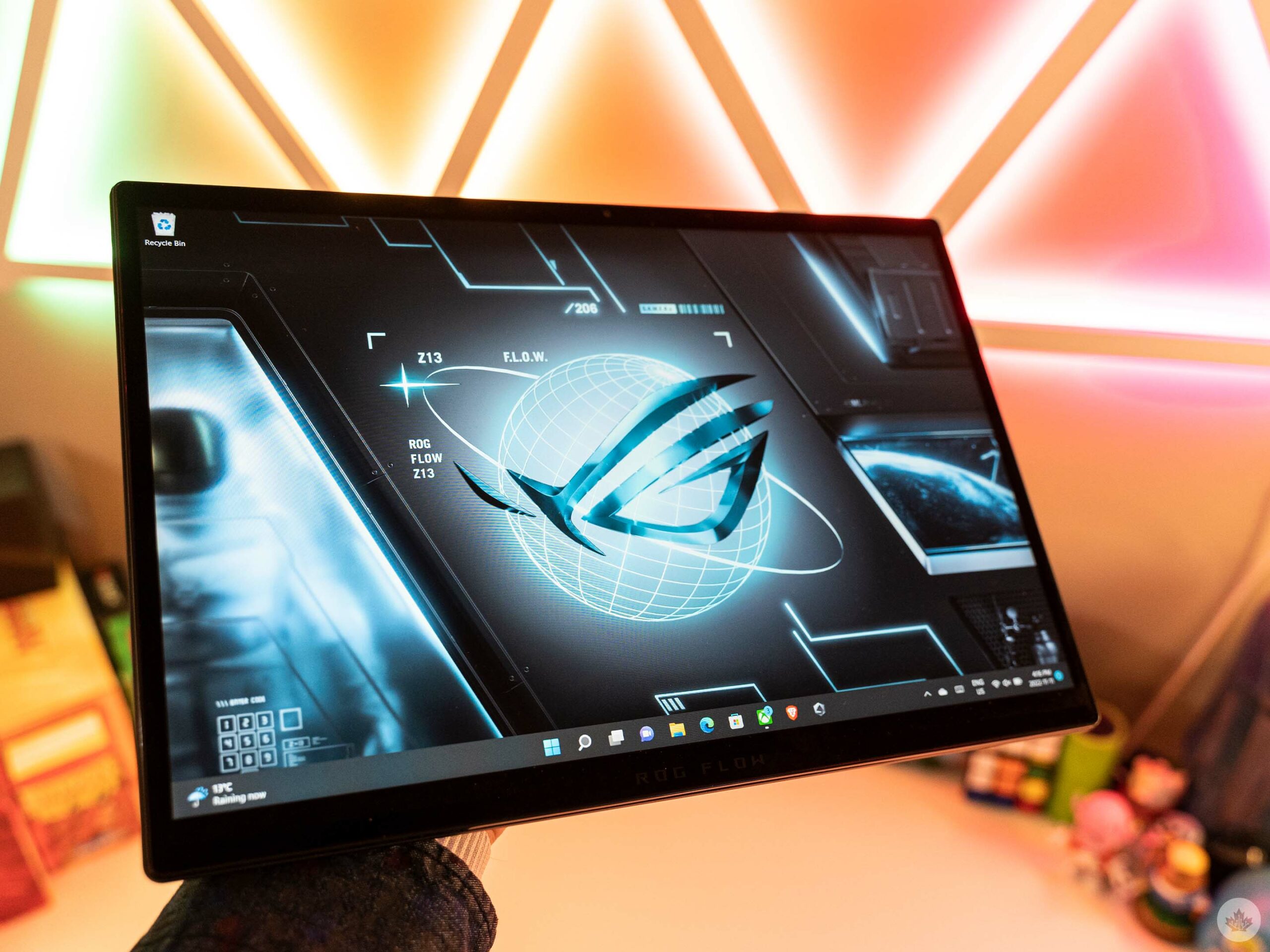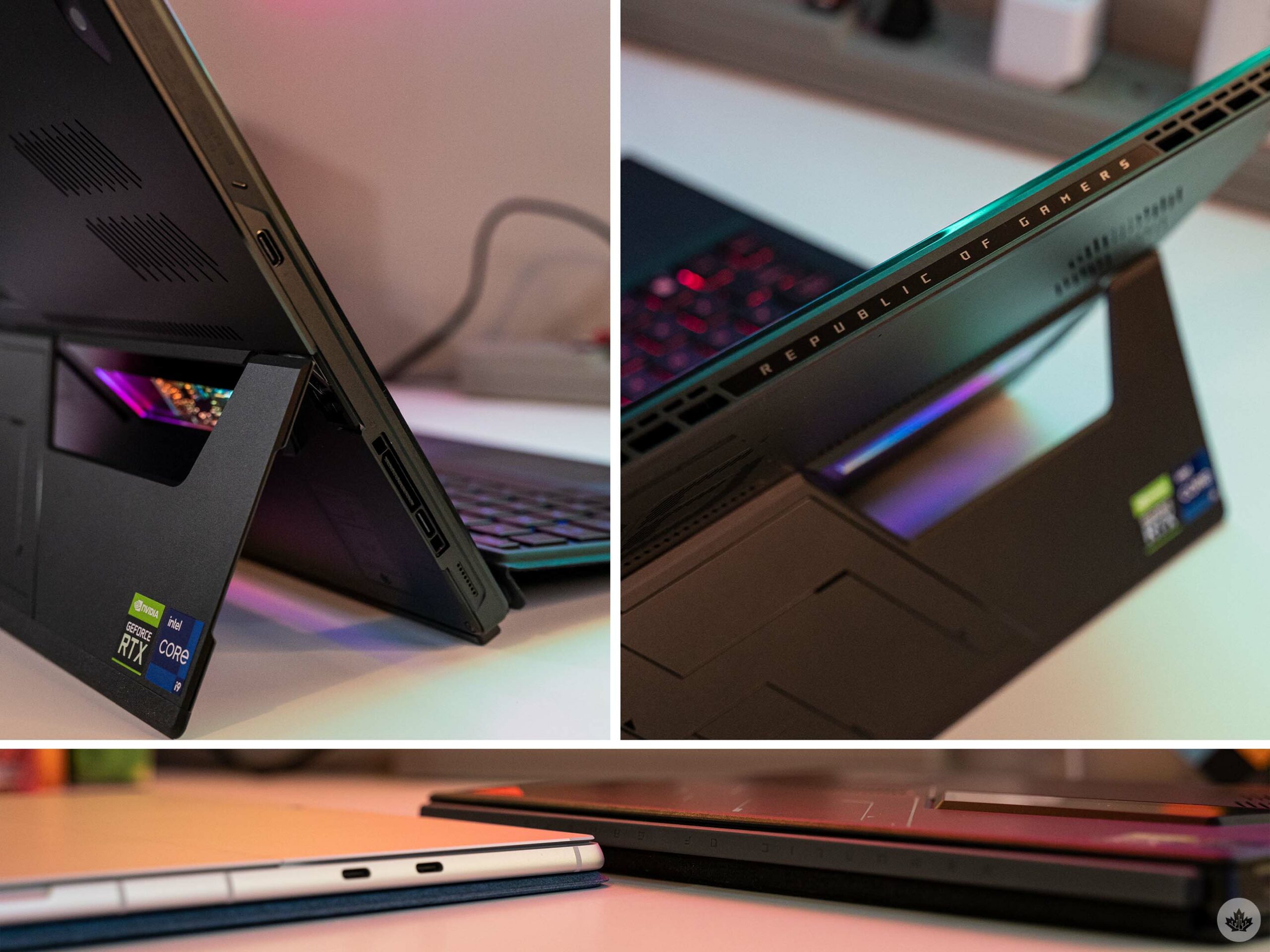It’s been a few years since I’ve tested a Lenovo Yoga laptop and the company’s latest Yoga 9i is surprisingly great. Sporting a new design with rounded edges and a stylish aluminum chassis, the 9i offers a solid 2-in-1 computing experience.
While the Yoga 9i isn’t exactly the most powerful PC around, it can handle most common computing needs, from browsing social media to word processing. It’s a great balance between high-end, powerful laptops and the lower-end laptops that trade premium materials for plastics.
The downside to this approach is that you don’t get as much performance for your dollar, but you get other benefits. The Yoga line’s signature soundbar hinge returns and the 360-degree hinge lets users get a tablet-like experience from their laptop without needing to buy a separate device.
Overall, I really like the Yoga 9i – my biggest complaint remains Lenovo’s odd pricing strategy and bloatware, but if you can nab the Yoga 9i on sale, it’s an excellent PC.
Specs
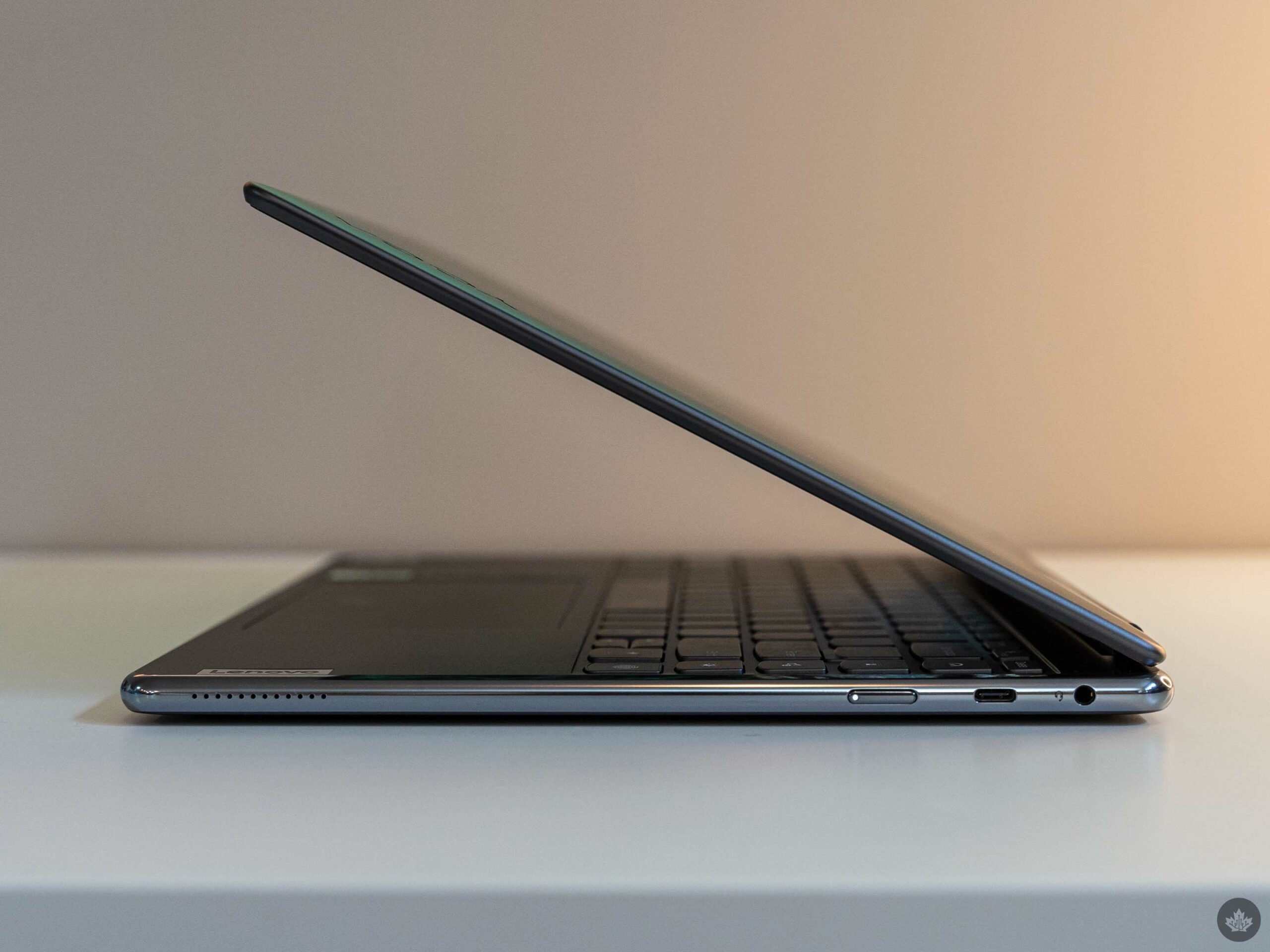
- Display: 14.0″ WUXGA (1920 x 1200) IPS, anti-glare, touchscreen with Dolby Vision, 400 nits, 16:10 aspect ratio
- Processor: 12th Gen Intel Core i7-1260P
- Memory: 8GB
- Storage: 256GB SSD
- Dimensions: 15.2mm x 318mm x 230mm / 0.6″ x 12.52″ x 9.06″
- Weight: 1.4kg / 3.09lbs
- Camera: 1080p FHD IR Camera with Privacy Shutter, face recognition
- Operating System: Windows 11
- Battery: Up to 23 hours of local 1080p playback
- Connectivity: Wi-Fi 6E, Bluetooth 5.1
- Sensors: Fingerprint sensor
- Ports: 2x USB-C Thunderbolt 4, 1x USB-C 3.2 Gen 2, 1x USB-A 3.2 Gen 2, Headphone/mic combo
- Graphics: Intel Iris Xe graphics
Note: the above specs apply to the model I tested. You can find a full spec sheet here.
12th Gen Intel gets it done
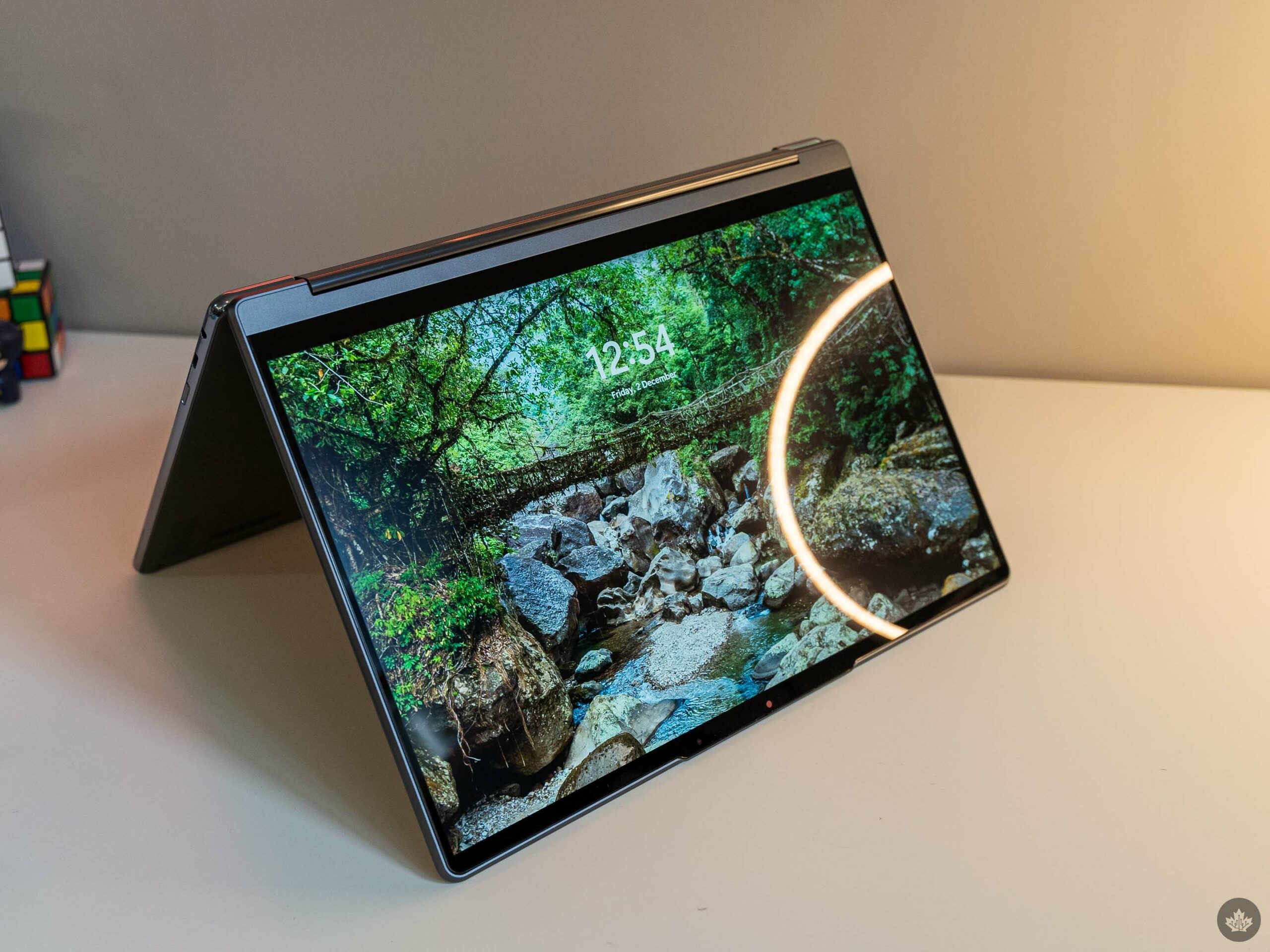
In my experience using the Yoga 9i, the performance was fairly solid. Intel’s 12th Gen i7-1260P did quite well both in real-world use and in benchmarks. My typical workflow, which involves running tons of Firefox tabs, Photoshop, Slack, and streaming music through Spotify, all ran relatively smoothly on the Yoga 9i.
The biggest issues I ran into were related to the low memory on my review unit. The 9i I tested only had 8GB of RAM, which limited my multitasking capabilities more than I expected. On more than one occasion, I encountered apps locking up or crashing outright just because there wasn’t enough memory to go around.
I’d strongly recommend getting a configuration with 16GB of RAM if you’re a heavy multitasker. Oddly, only the i7 variant of the 9i can come with 8GB of RAM, with the i5 version being locked to 16GB.
Despite the lower memory, I found the Yoga 9i benchmarked very well, beating out the Surface Laptop 5 despite having less memory and a similar processor. Given the similarity in CPUs, I’d attribute the difference at least partially thermals – the Yoga 9i is thicker than the Laptop 5 and the fans would kick on sooner and run louder to keep things cool.
Still, Intel's 12th Gen CPUs so far seem impressive, although they still suffer in the battery department.
Rounded edges are sick
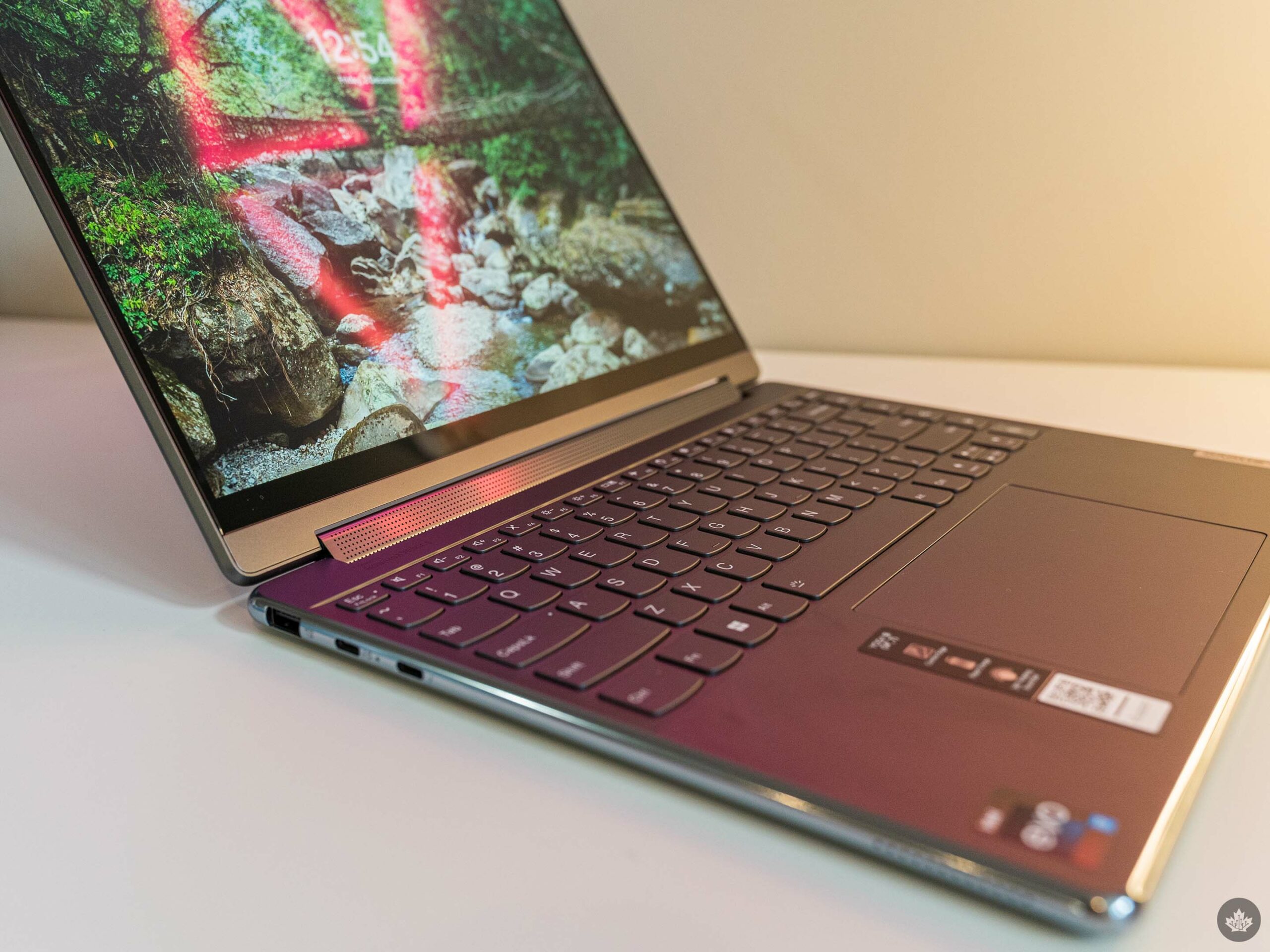
I’m a big fan of the Yoga 9i’s design, especially the rounded edges. It makes for a very unique laptop, but there’s a practical benefit too. When using the Yoga 9i in tablet mode, it’s more comfortable to hold than other laptops with sharper angles.
More than that, I think the polished edges mixed with the matte surface look fantastic. The chassis is a tad thick for my liking, but I’m such a fan of the looks I’d happily give that a pass.
I’d like to see more laptop manufacturers take unique designs like Lenovo did with the Yoga 9i. Not every laptop needs rounded edges, but new and different approaches can make for unique styles.
On another note, the display is excellent as well. Sure, it’s not super high resolution, but 1080p remains a solid experience at the 14-inch size. I also appreciate the 16:10 aspect ratio – the extra height makes for a better experience working in long vertical documents.
It’d be nice if Lenovo shrunk the bezels a little on the Yoga 9i, but they’re certainly not egregious.
The Yoga 9i trackpad puts others to shame
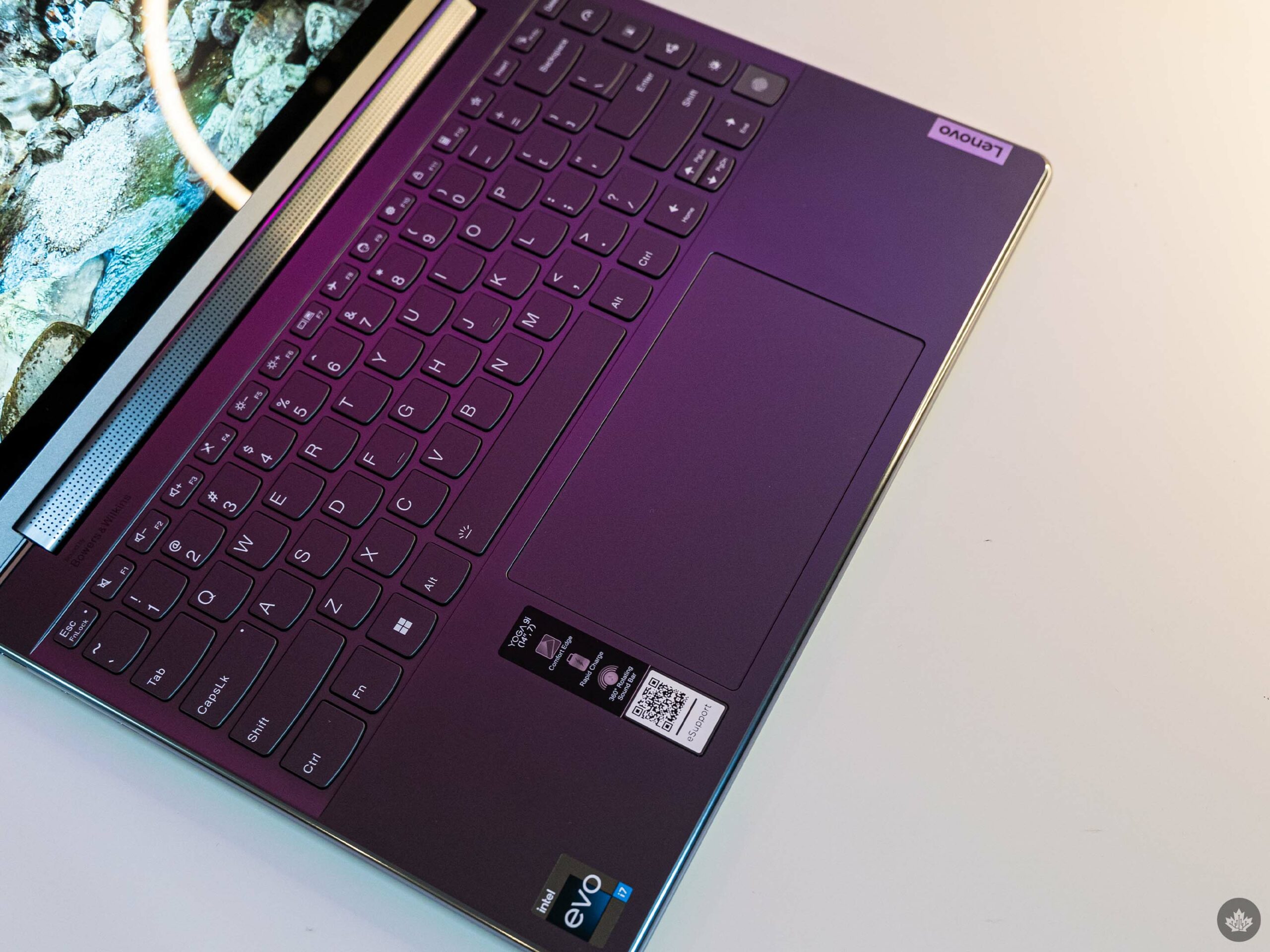
It feels like someone finally heard my plea. Lenovo equipped the Yoga 9i with one of the biggest trackpads I’ve ever seen. This thing is massive. And I love it.
As someone who regularly uses multiple monitors, having this giant trackpad is a dream come true. I still prefer using a mouse when I can, but at least with this I still feel productive zipping from screen to screen, moving windows around, dragging files and more.
Frankly, the Yoga 9i sets the bar for trackpad size – anything less misses the mark.
As good as the trackpad is, I wish Lenovo put as much effort into the keyboard. The keyboard isn’t bad by any stretch, but it’s not my favourite to type on. It lacks crisp, tactile feedback, offering up an almost mushy experience instead. It’s not the worst I’ve used, but it could certainly be better.
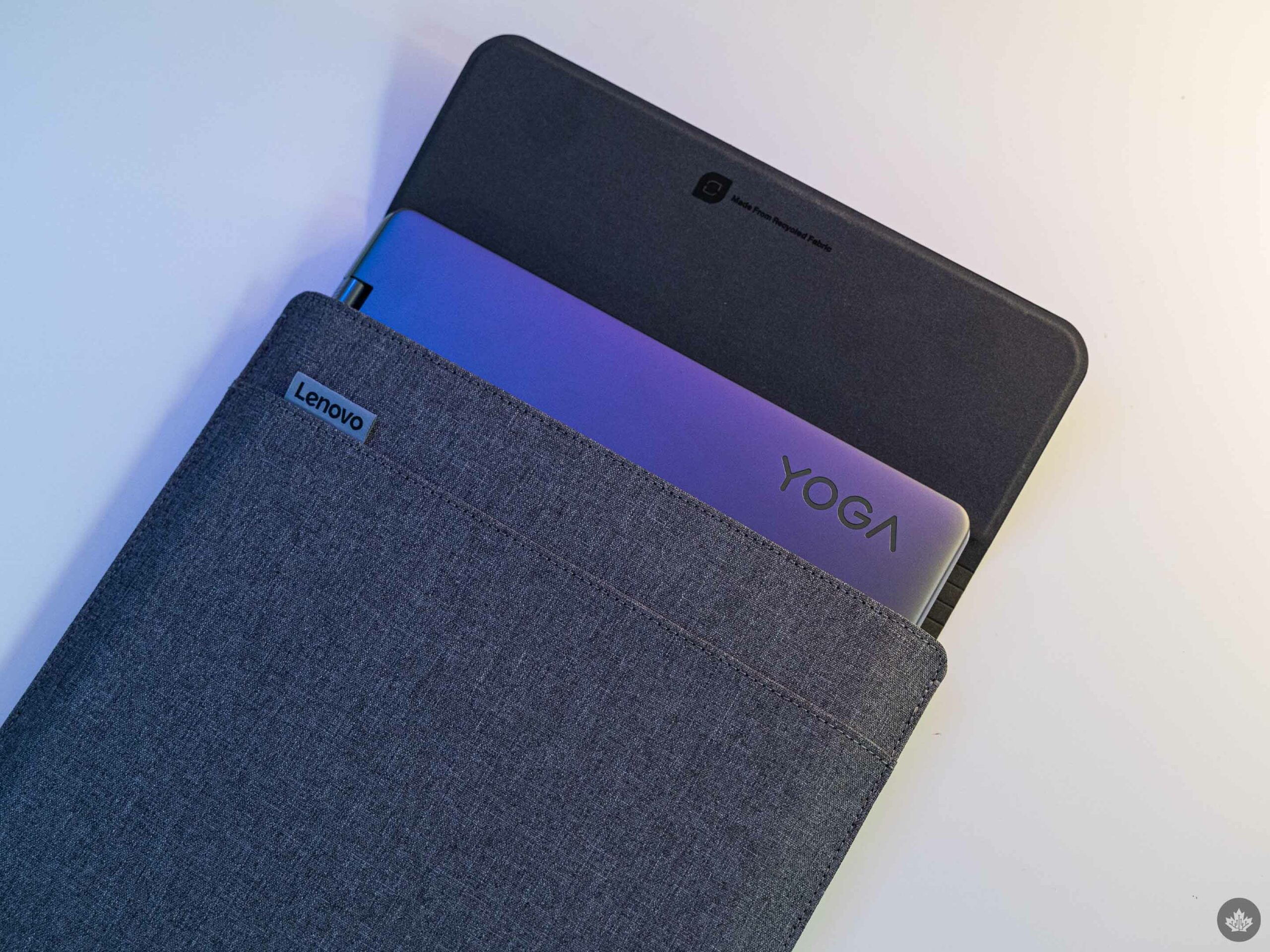
Another frustration with the keyboard is the line of extra keys on the right side. On one hand, the four shortcut keys could be helpful, but I found I hit them by accident more often than not. The top key (and the one I accidentally pressed the most) cycles the Yoga 9i through three performance modes. The next button launches Lenovo’s ‘Smart Appearance’ software that can replace your video background, frame your face, apply eye contact correction, and more. The next button toggles different sound profiles, and the final button is a dedicated toggle to switch Windows between light and dark mode.
Finally, the hinge speaker remains a great addition. It’s not the best speaker out there, but it did the job well for watching videos on the laptop. I enjoyed it less for listening to music, and ultimately most people would be better off with a decent set of headphones over the hinge speaker, but it’s a nice addition nonetheless.



